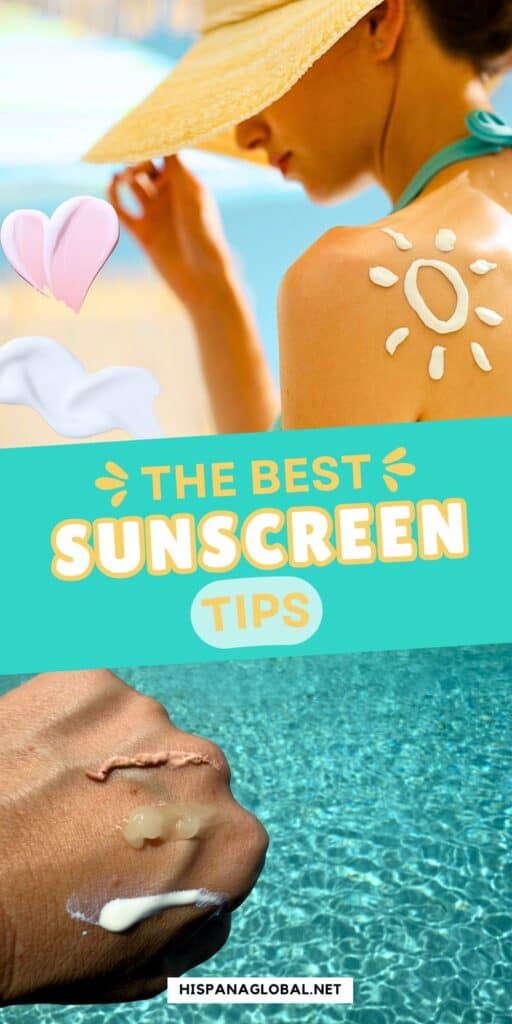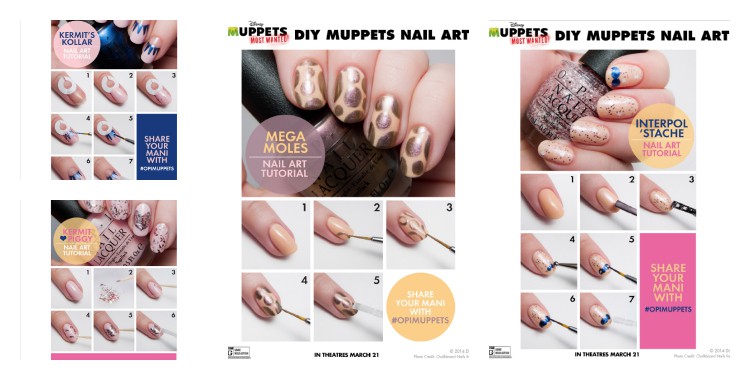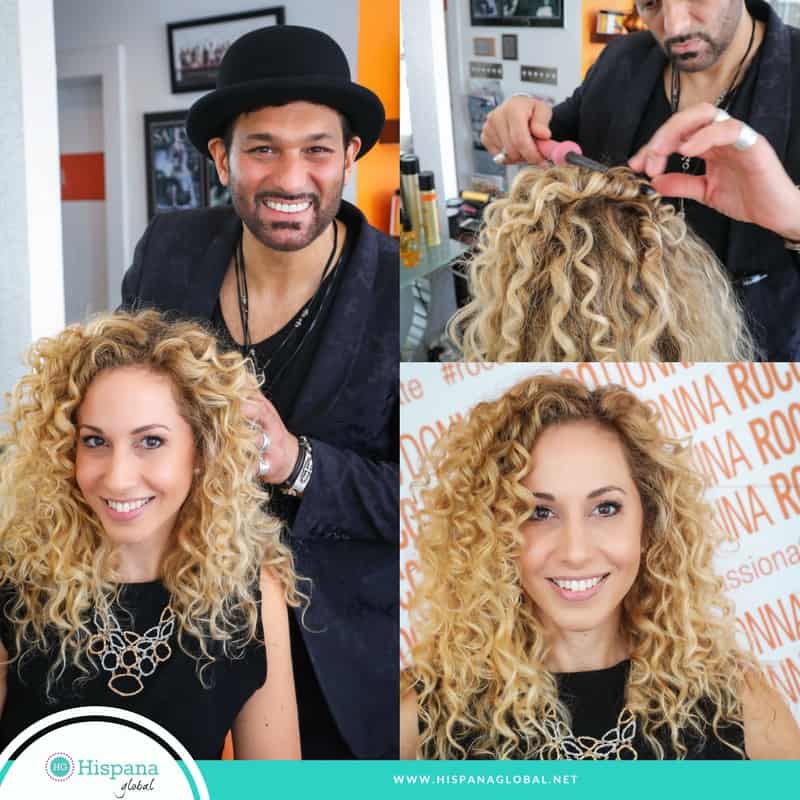How to Choose and Apply Sunscreen
Choosing the right sunscreen for your skin type and learning how to apply it is crucial to protect your skin, especially during the summer. Don’t stress! We did the research and we have everything you need to know about sunscreen so you can truly protect your skin from the sun’s harmful rays.

If you think it’s just for beach days, think again. Daily sun protection is one of the most important habits you can build to keep your skin healthy, glowing, and youthful — no matter your age. But it’s not just about slathering something on and heading out the door. There’s a right way to apply sunscreen, and doing it correctly can make a huge difference.
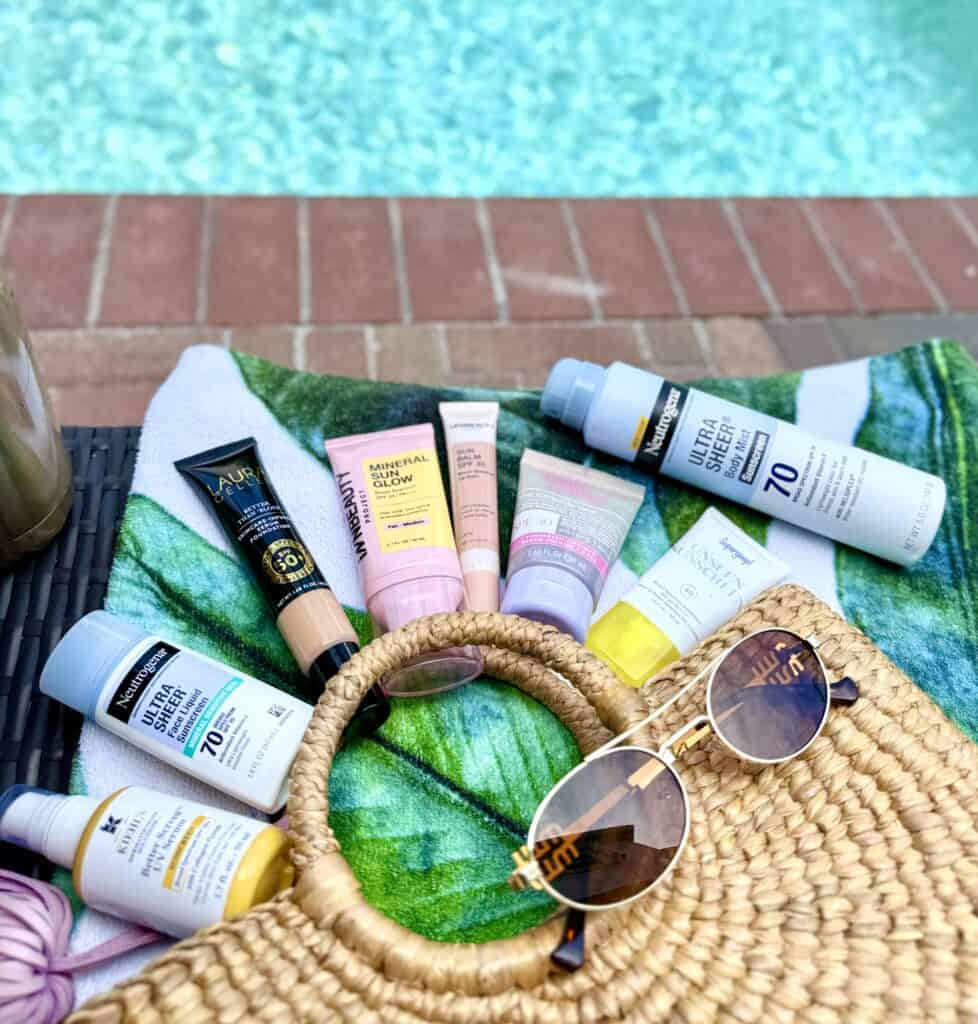
One of the biggest mistakes is not applying enough sunscreen. Dr. Bertha Baum, board certified dermatologist and Neutrogena spokesperson, says that one of the easiest ways to know if you are skimping on SPF is to see how long a 5 ounce bottle lasts. If it lasts you over a month, clearly you aren’t applying enough!

Whether you’re getting ready for a pool day or just a morning walk, here’s your ultimate (and simple!) guide to applying sunscreen like a pro — without the guesswork.
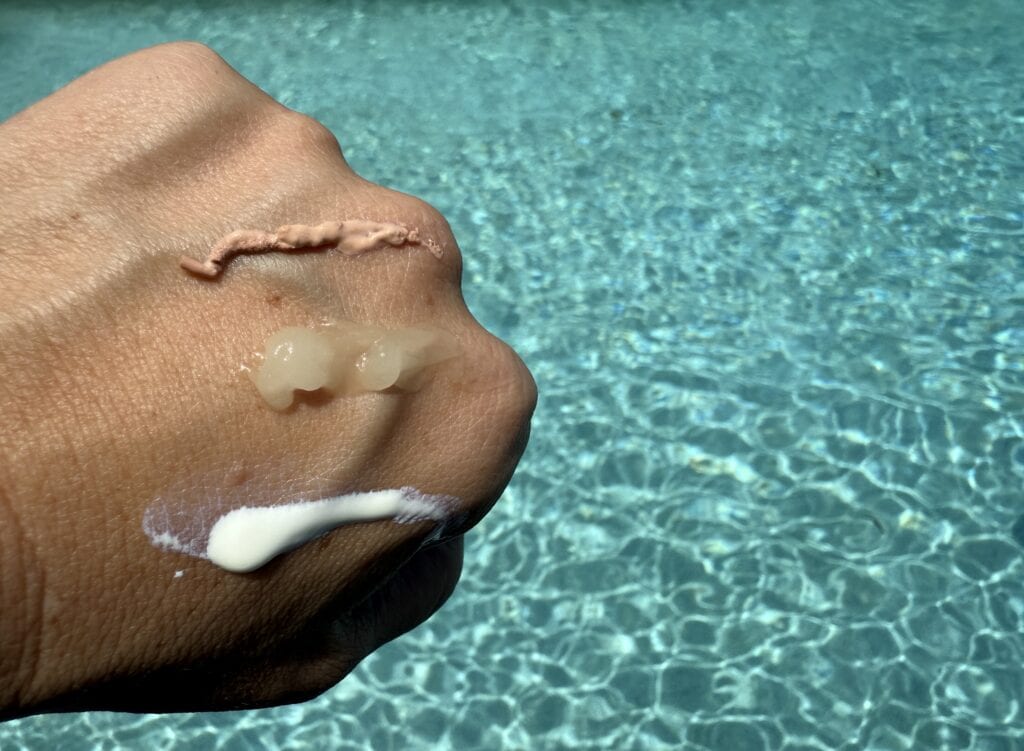
1. Start with the right sunscreen for you
Not all sunscreens are created equal, and finding the right one depends on your skin type, lifestyle, and personal preferences. Here are a few tips and you can check out some of my favorites here.
Know your skin type: If your skin is sensitive, look for mineral sunscreens with zinc oxide or titanium dioxide. For oily or acne-prone skin, opt for oil-free, non-comedogenic formulas. Dry skin? Choose one with moisturizing ingredients like hyaluronic acid or ceramides. Over 40? Dr. Baum recommends SPF with skincare ingredients such as vitamin C and peptides, like Neutrogena Rapid Wrinkle Moisturizer with SPF 30.
Go broad-spectrum: Always look for a broad-spectrum label — it means you’re protected from both UVA (aging) and UVB (burning) rays.
Pick the right SPF: For everyday use, SPF 30 is usually enough. But if you’ll be spending a lot of time outdoors, especially during peak hours (10 a.m. to 4 p.m.), go for SPF 50 or higher.
Tips:
- Try a tinted sunscreen for light coverage and an even skin tone.
- Sunscreen sticks are great for touch-ups on the go (and for kids!).
- Consider a multitasking sunscreen that also moisturizes or has antioxidants.
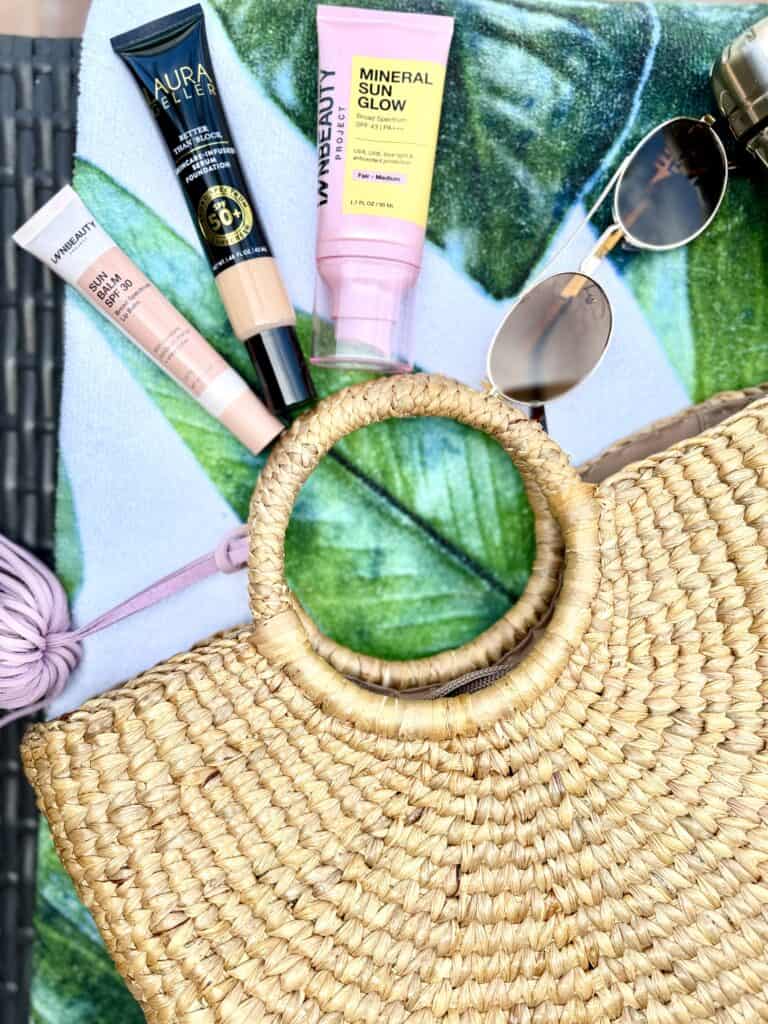
2. Time your application just right
Timing matters. Sunscreen needs a little time to settle and protect your skin properly.
- Apply 15–30 minutes before going outside: This gives your sunscreen time to absorb and start working.
- Check the UV Index: Apps like your weather app or websites like EPA.gov can tell you how strong the sun’s rays are. On high UV index days, be extra diligent.
- Reapply after swimming or sweating: Even water-resistant formulas need to be reapplied — especially after towel-drying.
- Set a reminder: Busy day? Set a phone alarm so you don’t forget your second or third application.
3. Use enough sunscreen (seriously, most of us don’t)
The #1 mistake people make? Not using enough. Sunscreen only works if you apply a generous layer.
- Face, neck, and ears: Use the “two-finger rule” — a strip of sunscreen down two fingers is a good amount for your face, and ears. Add one more finger for your neck.
- Body: Think of a shot glass full of sunscreen for your entire body. Don’t forget easily missed spots like the back of your legs, feet, hands and shoulders.
- Blend evenly: Use circular motions to spread sunscreen evenly. Take your time and avoid streaks or missed patches.
4. Don’t skip these often-forgotten spots
Dr. Baum rwminds us it’s easy to remember your nose and cheeks, but don’t forget:
- Neck
- Ears (especially the tops!)
- Scalp (use a spray if you have thinning hair or part lines)
- Back of the neck
- Tops of your feet and hands
- Back of your knees
Tip: Sunscreen sticks or clear formulas make it easier to see where you’ve applied — especially helpful with kids or when you’re on the go.
5. Make it part of your everyday routine
The easiest way to protect your skin? Make sunscreen as routine as brushing your teeth.
- Apply Daily — not just at the beach: Even on cloudy days, up to 80% of UV rays can reach your skin. Make sunscreen the last step in your morning skincare routine.
- Layer up with UV-protective clothing: For extra protection, wear wide-brimmed hats, sunglasses, and UPF clothing — especially during peak hours.
- Create a daily ritual: Keep sunscreen near your toothbrush, says Dr. Baum, so you remember to apply every morning before your makeup.
6. Reapply. Reapply. Reapply.
One-and-done doesn’t cut it when it comes to sun protection.
- Every two hours: That’s the golden rule. If you’re sweating, swimming, or just out and about for hours, reapply even more frequently.
- Plan for reapplication: Keep your sunscreen in your bag, car, or beach tote so it’s always on hand.
- Water-Resistant formulas last longer: They’re not waterproof, but they’ll hold up longer during swims or workouts. Just remember to reapply after towel-drying.
What you might not know about sunscreen (but should)
There’s a lot of information out there about sunscreen — and for good reason. The right sunscreen doesn’t just prevent sunburn; it’s one of the best ways to reduce your risk of skin cancer, including basal cell carcinoma and squamous cell carcinoma, two of the most common forms of cancer in the United States. Both my parents have had basal cell carcinoma so I have been adamant about protecting my own skin since I was in my early twenties.
Whether you’re shopping for face sunscreens, sunscreen sprays, or the best sunscreen for your beach bag, it’s worth understanding what to look for on the label — and why.

Start by choosing a broad-spectrum sunscreen with UVA and UVB protection. The American Academy of Dermatology and the Skin Cancer Foundation both recommend a sun protection factor (SPF) of at least SPF 30, which blocks about 97% of UVB rays. A higher SPF can offer a slightly increased level of protection, especially during the summer months, but no sunscreen blocks 100% of the sun’s harmful UV rays.
Pay close attention to whether your type of sunscreen is water resistant, especially if you’re engaging in water activities or expect to sweat. For the best protection, reapply every two hours — and always after swimming or towel drying. A good tip: use a full ounce of sunscreen (about a shot glass) for your body, more if you’re larger in body size. Many people use far less sunscreen than the recommended amount, which decreases your protection.
There are two primary categories of sunscreen: physical sunscreens, also known as mineral sunscreens, and chemical sunscreens. Physical sunscreens use ingredients like zinc oxide or titanium dioxide to deflect ultraviolet radiation, and they’re often a good option for those with sensitive skin or prone to skin irritation. However, they may leave a white cast, particularly on darker skin tones. Newer formulations are improving, but always test a product on exposed areas of the body before committing. Meanwhile, chemical sunscreens absorb UV radiation and tend to blend more easily, though some people may experience allergic reactions depending on the sunscreen ingredients.
Don’t forget to protect often-overlooked spots. Use a lip balm with SPF, cover your scalp and face with a wide-brimmed hat, and apply stick sunscreen to tricky areas like your nose and ears. For quick reapplication, especially for kids, sunscreen sprays — particularly those in the range of mist spray sunscreens — can be a practical choice. Just make sure to rub them in for even coverage.
Also, always check the expiration date on your sunscreen bottle. If it’s expired, toss it. The Drug Administration doesn’t require all sunscreen products to have expiration dates, so if yours doesn’t, write the purchase date on the bottle and replace it after three years — sooner if it’s been stored in heat.
If you’re unsure which sunscreen to choose, talk to your healthcare provider or a board-certified dermatologist. People with skin conditions, sensitive skin, or people of color may benefit from more personalized guidance to avoid health risks related to sun exposure and ensure their sunscreen application is offering full coverage and comfort.
Sunscreen isn’t just about avoiding burns — it’s about protecting yourself from long-term sun damage and preserving your skin’s health. Practicing sun safety year-round is one of the smartest habits you can build.
Taking the time to apply sunscreen the right way is one of the simplest — yet most powerful — ways to prevent premature aging, dark spots, and skin cancer.
So, whether you’re headed to the beach, running errands, or simply stepping outside, let your sunscreen be your invisible armor.
